Discover 8 hidden attractions, cool sights, and unusual things to do in Circleville (United States). Don't miss out on these must-see attractions: St. Philip's Episcopal Church, Circleville Memorial Hall, and The Ted Lewis Museum. Also, be sure to include Ansel T. Walling House in your itinerary.
Below, you can find the list of the most amazing places you should visit in Circleville (Ohio).
Table of Contents
St. Philip's Episcopal Church
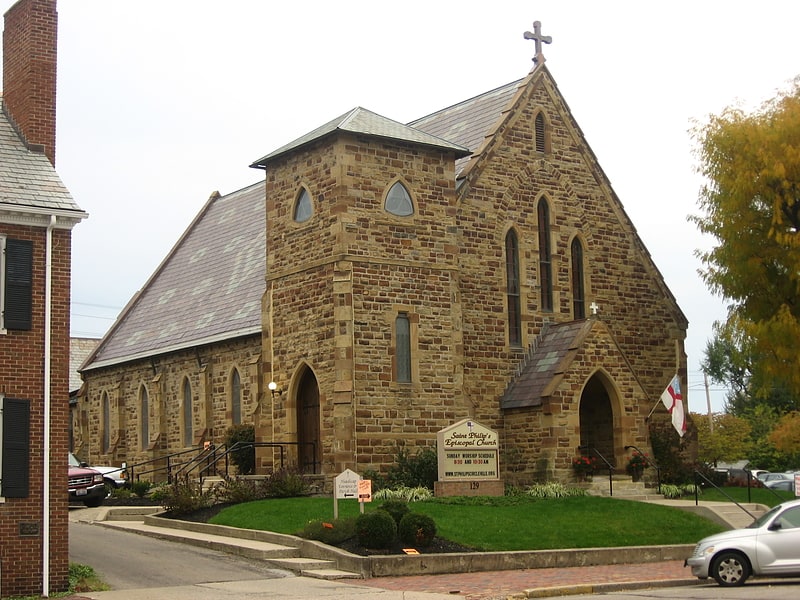
Episcopal church in Circleville, Ohio. St. Philip's Episcopal Church is an historic Episcopal church located at 129 West Mound Street in Circleville, Ohio. The first Episcopal service in Circleville was held on May 26, 1817, by the Rev. Philander Chase, who in 1819 became the first bishop of the Episcopal Diocese of Ohio. The stone church building was built in 1866 in a mixed Gothic and Tudor Revival style and was consecrated in 1868. Besides its actual name, the church has been known as the "Little Church on the Mound," because it sits on the base of what was formerly one of Circleville's numerous Native American mounds that was historically known as "Mount Gilboa."
In 1918, the church was modified by the construction of a Tudor Revival structure that has since been used as a parish hall. Despite this addition, the church's historic integrity was not damaged, as both its Gothic Revival style and the addition's Tudor Revival style are meant to resemble older English structures. In recognition of its well-preserved historic architecture, St. Philip's was listed on the National Register of Historic Places in 1986.
St. Philip's today is an active parish in the Episcopal Diocese of Southern Ohio. The Rev. David E. Getreu is the 43rd Rector.[1]
Address: 129 W Mound St, 43113 Circleville
Circleville Memorial Hall
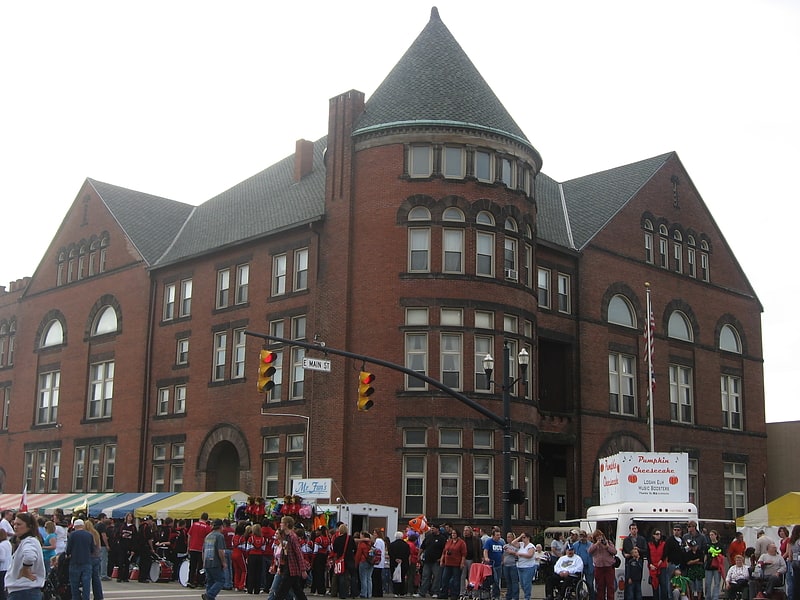
Historical place in Circleville, Ohio. Circleville Memorial Hall is a historic community center and war memorial in the city of Circleville, Ohio, United States. Built in the years after the Civil War to remember the victims of the war, it has been named a historic site.
In 1871, the state legislature enacted legislation to encourage the construction of Civil War memorials: the new law permitted Ohio's counties to gather money for the construction of memorials. This law permitted the construction of the Pickaway County memorial in Circleville twenty years later. Besides serving as a war memorial, the building has provided space for numerous community activities: the city's public library has long been housed on the first floor, while no meeting hall in the city is larger than the one in Memorial Hall's upper floors.
Three stories tall, Memorial Hall is a brick building with a stone foundation and additional elements of brick and stone. The exterior is a clear example of the Richardsonian Romanesque style, due to elements such as the rounded archways, the heavy masonry construction and stone trim around its ribbon windows, its columns, and a massive corner tower. Inside, the community auditorium features a large balcony on the third floor.
In late 1980, Memorial Hall was listed on the National Register of Historic Places, qualifying for inclusion because of its historic architecture.
In recent years, through local funding, donations and state capital appropriations several renovations to the building have taken place including repairs to the roof, updating the HVAC to more modern standards and replacing exterior windows that leaked.[2]
Address: 165 E Main St, Circleville
The Ted Lewis Museum

Specialty museum, Museum
Address: 133 W Main St, 43113-1619 Circleville
Ansel T. Walling House
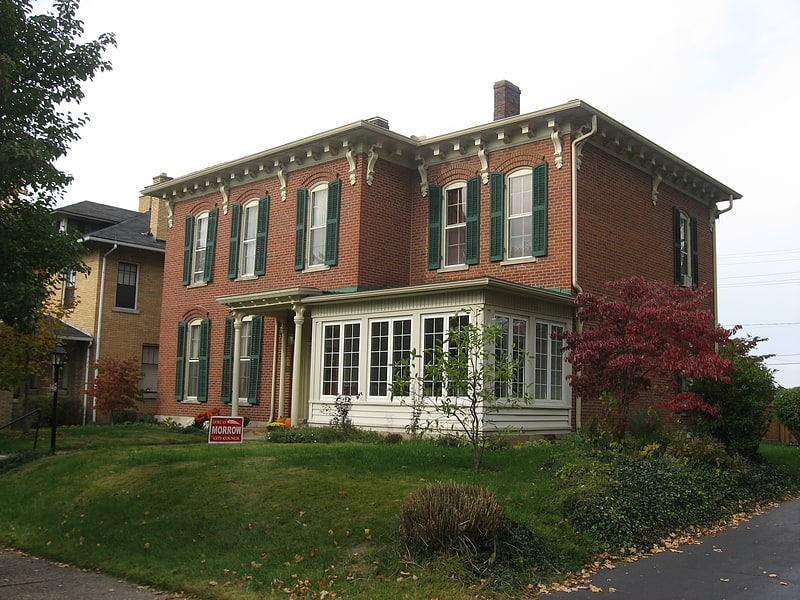
The Ansel T. Walling House is a historic house in Circleville, Ohio, United States. An Italianate structure that was built in 1869, it was the home of Ansel T. Walling, a state and federal legislator.
A native of New York, Walling settled in northeastern Ohio in 1843, where he began to publish a local newspaper. After serving as a clerk for the Ohio House of Representatives, he and his wife Sarah moved to Circleville in 1863; there they bought land and soon began to erect a house. Completed in 1869, its brick walls rest on a foundation of sandstone and are covered with an asphalt roof. Elements such as a bracketed cornice and a pitched roof with prominent eaves make the house distinctively Italianate; it is one of Circleville's best Italianate houses.
Major dates in the Walling House's history include Walling's death in 1896, his widow's death in 1922, and its designation as a historic site in 1987. In that year, the house was listed on the National Register of Historic Places, qualifying because of its connection to Walling and because of its well-preserved historic architecture. Two other houses in the same block, known as the Morris and William Marshall Houses, are also listed on the National Register.[3]
Matthew McCrea House
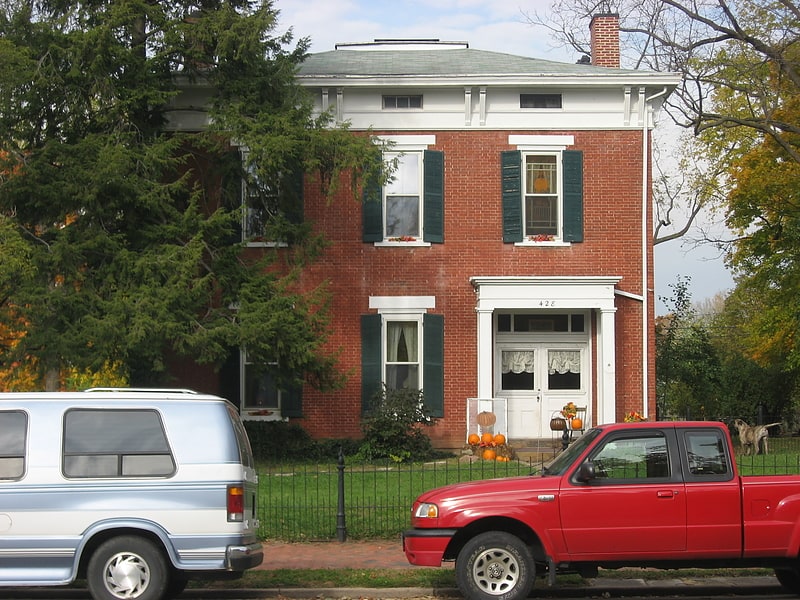
Building in Circleville. The Matthew McCrea House is a historic house in Circleville, Ohio, United States. Located along Main Street on the city's eastern side, the house mixes elements of the Greek Revival and Italianate architectural styles.
Built circa 1840, the McCrea House is a brick building with a foundation of sandstone and a roof of asphalt, plus minor elements of wood and sandstone. Two stories high, the house is built in a mixed architectural style: its structure is the post and beam characteristic of period Greek Revival structures, but the overall shape is that of early Italianate houses. Among its Italianate elements are its cubical shape, a shallow hip roof, and large eaves supported by double brackets. Greek Revival elements include the entrance portico, a large entablature with frieze windows, and sandstone window sills and lintels. Inside, the house features original its original walnut woodwork and a circular stairway wrought of cherry.
For its first several decades, the McCrea House was almost alone; only one other nearby house was built circa 1840, for the surrounding neighborhood was primarily constructed in the last decade of the nineteenth century. Because of its historic architecture, the McCrea House was listed on the National Register of Historic Places in 1988. It lies one block east of the Watt-Groce-Fickhardt House, which is also listed on the National Register.[4]
William Marshall Anderson House
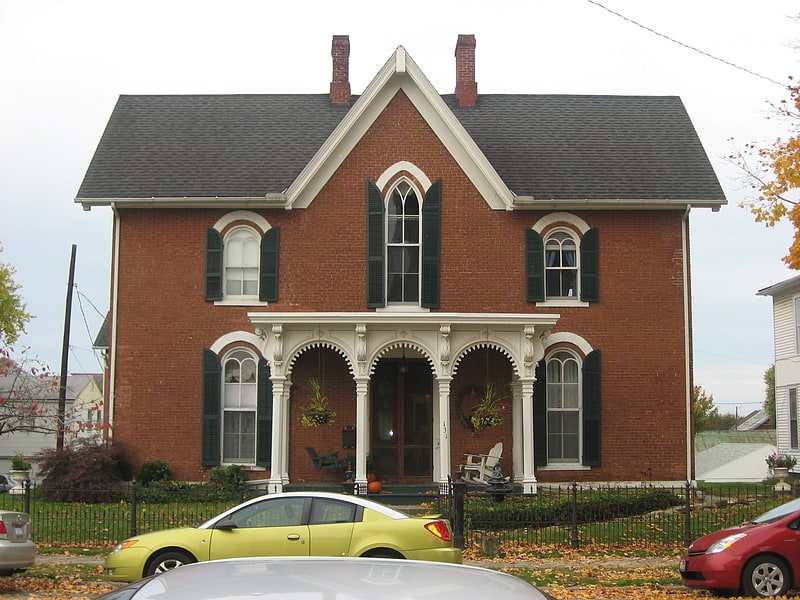
The William Marshall Anderson House is a historic house in Circleville, Ohio, United States. Built in 1865 as the home of William Marshall Anderson, the house has been ranked as a leading example of Gothic Revival architecture. Walls of brick and wood, covered with an asphalt roof, are decorated with many features of this style, including ornate wooden trim and ogive windows. The house's well-preserved nineteenth-century architecture led to its placement on the National Register of Historic Places in 1979.[5]
Morris House
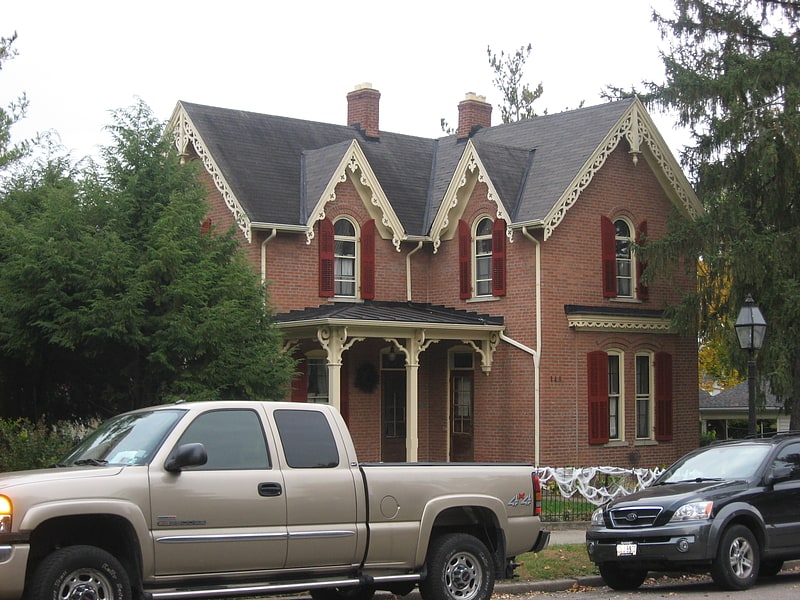
The Morris House is a historic house in Circleville, Ohio, United States. Located on Union Street near the city's downtown, it is an ornate Gothic Revival structure. A two-story structure built of brick and sandstone upon a stone foundation and covered with a slate roof, it is divided into seven rooms.
The house was built in 1865 for the family of Samuel Morris, the president of the local Third National Bank. Morris chose many elaborate features for his house, such as decorative slates for the roof, multiple gables on the roofline, and elaborate bargeboards overhanging the ground. Inside, the house retains its original hardwood floors and fireplace mantels. Two porches serve the main entrances to the house: the front porch was part of Morris' design, although the rear porch was built in the early twentieth century.
Both before and after the Morris family left the house in 1922, it was well maintained. Today, it is one of Circleville's best Gothic Revival houses. In recognition of its architectural significance, the Morris House was listed on the National Register of Historic Places in 1979. Two other houses in the same block, known as the William Marshall Anderson and Ansel T. Walling Houses, are also listed on the Register.[6]
Watt–Groce–Fickhardt House
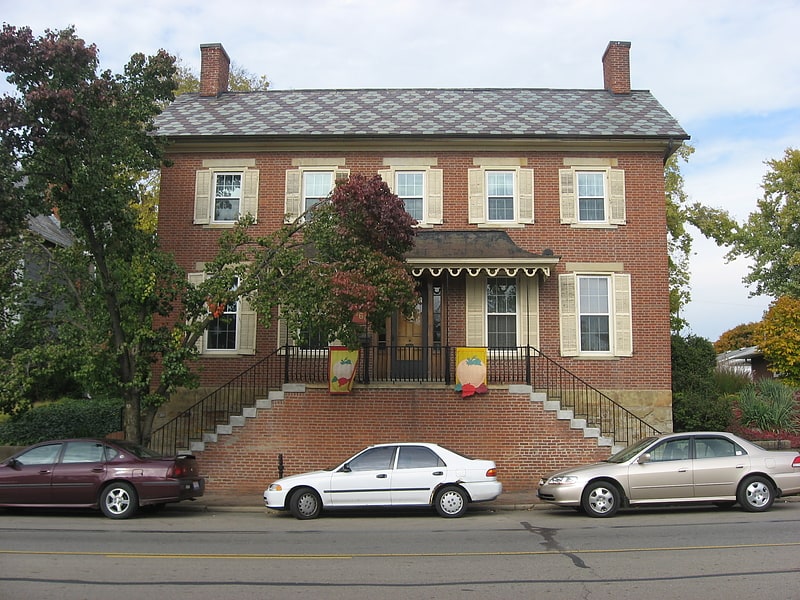
The Watt–Groce–Fickhardt House is a historic house in Circleville, Ohio, United States. Located along Main Street on the city's eastern side, it is a distinctive landmark and has been named a historic site.
Circleville was platted in 1810 on a farm owned by Jacob Ziegler and Samuel Watt; later in the year, Ziegler sold his interest in the farm to Watt. With the community's rapid expansion, Watt sold more land; by 1820, only 148 acres (60 ha) remained in his ownership. Using the money from the land sales, Watt built a new farmhouse in 1826; two stories high, it is a brick structure with a stone foundation and a metal roof. When completed, it was a typical hall and parlor house.
As Circleville continued to grow, Watt sold most of his remaining land in 1835; only 5 acres (2.0 ha) remained after the end of that year. Becoming a leading local businessman, he made an extensive addition to the house in 1852; this new structure took the form of an I-house. A smaller addition, built in 1885, is a frame structure attached to the original portion of the house.
Today, the Watt–Groce–Fickhardt House remains a well-preserved example of antebellum architecture. In 1985, the house was listed on the National Register of Historic Places, qualifying because of its historic architecture and because of its connection to a later resident, John G. Groce, who was a leading member of local society.[7]